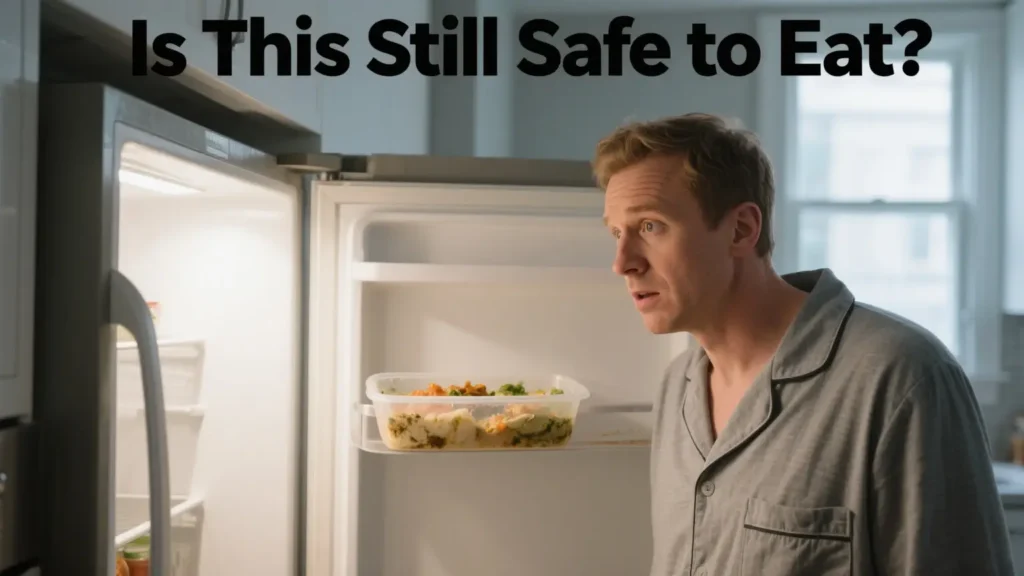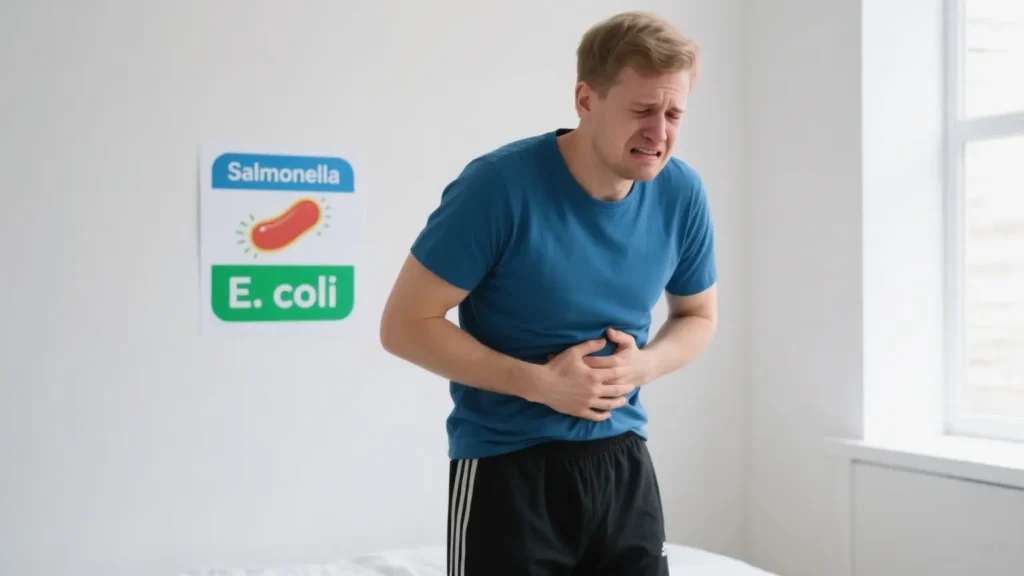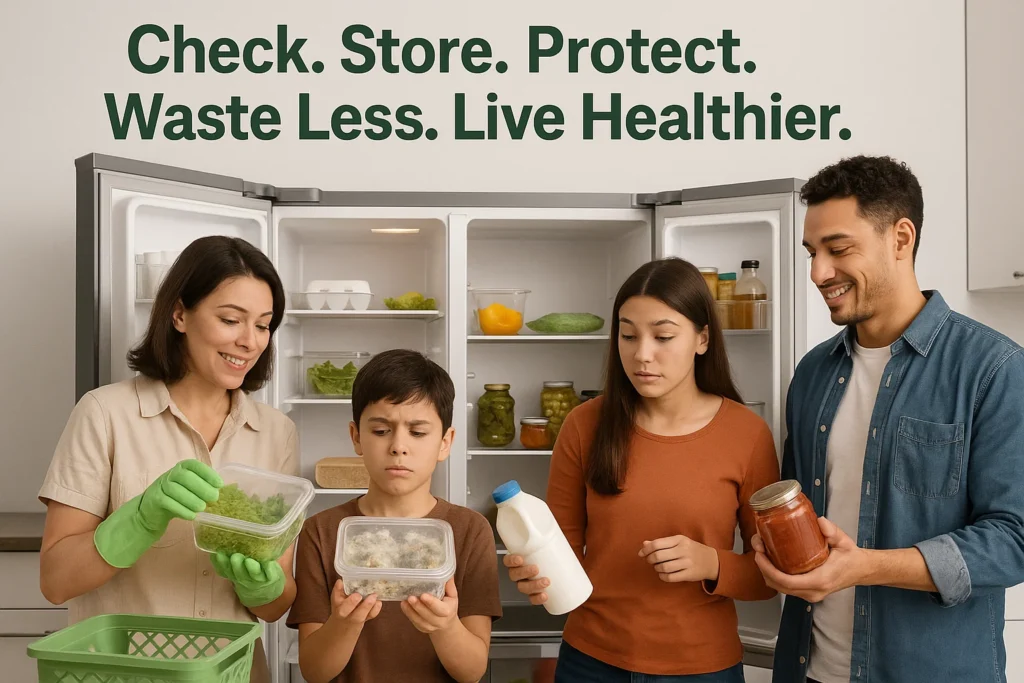You open your refrigeration, see the leftovers and ask yourself “Can I eat this?” Most of us have found ourselves in a similar situation. Deciding if a food product is still safe to eat can be more than challenging, but it is definitely not impossible. Eating spoiled food does not only leave an unpleasant aftertaste, but it can also become the root cause of severe health problems.
In this manual, we will go through some clues on how to tell if food has gone bad, how to decipher expiration labels, and what kind of handling is the best to use if you wish your food to last longer. It doesn’t matter if you are dealing with meat, dairy, fruits and vegetables, or kitchen staples, a good understanding of spoilage signs is one of the necessary skills you must have regarding your life routine.

1. Common Signs That Food Has Gone Bad
Familiarizing yourself with the basic signs of food spoilage is the best prevention against having to throw away food later.
Smell
If a product smells sour, rotten, or in any other way funny, it is not safe for consumption. Examples of bad odors include milk that smells sour, vegetables with rancid odor, or meat that presents a stinky smell.
Texture
Gooey, tacky, and soft textures are signs of bacteria being present. The appearance of wilted greens doesn’t mean they cannot be used; however, slipperiness and sogginess are characteristics of spoilage.
Color Changes
One of the first things to notice when looking for spoilage is the change in color. Particularly in meat, the occurrence of dark or yellow patches mostly means that it has gone bad. Molds are generally white, blue, green, or black in color, however, any of these are step-off signals.
Mold
When making food, do not go for the visible mold as your indicator, but if you do spot the mold, the food is unsafe to eat. Sometimes, hard cheese and firm vegetables that contain mold can be brought back to comme-il-faut status if they are trimmed, while soft foods that have been invaded by the mold need to be thrown away.
Gas or Swelling
The bloating in the food packaging, fizzy drinks, and unfamiliar fizzing are the first signs that gas has been formed by bacteria, especially canned goods or refrigerated leftovers.
Taste (Used Only when No Other Way Out Left)
Taste doesn’t determine food safety by itself, but in the cases when you have done everything above but not sure, a small bite of it could either confirm your fears or dispel your confusion. But remember, leftovers which don’t taste bad can still be hazardous due to the possible bacterium present.
2. How to Tell If Different Types of Food Have Gone Bad
There are various characteristics to recognize food spoilage through different types of products.
Dairy Products
- Milk: None of those three features of milk would be good- the taste, the color, or the texture if you want to keep it for later.
- Cheese: Trying to save the cheese by removing the mold from the hard cheese slice is acceptable as to the soft cheese, throw it away.
- Yogurt: The natural decanting of the liquid is acceptable whereas the presence of the mold and the sour flavor is not.
Meats & Poultry
- Raw meat: If it’s slimy, has an odd color (mainly green or gray), and smells bad then it’s off.
- Cooked meat: If the smell is funky or the texture is different then get rid of it right away.
- Poultry: Do not use if it feels slimy or the sulfur smell is felt.
Seafood
- Fish: Fresh fish smells salty, not fishy nor sour. When the eyes are dull and the flesh is weak then it’s best to leave aside.
- Shellfish: Discard the ones which are open while raw, or those which remain closed after cooking.
Fruits & Vegetables
- Berries: Mold and mushiness are indications of bad produce.
- Leafy Greens: A certain amount of wilting is fine, but sliminess is a definite sign of spoilage.
- Root Vegetables: The development of soft spots or the production of foul odors signify that they are not fit for use.

Grains & Breads
- Bread: The presence of mold is absolutely unacceptable. It is always possible for all the loaf to be affected even if the mold is in a single spot.
- Rice & Pasta: if these are cooked, then they should not be consumed 3-5 days after. If uncooked, the detection of the smell or the presence of insects means that these are unfit for use.
Pantry Items
- Canned Goods: All rusted, dented, or swollen cans should be kept away.
- Oils: Rancid oil smells and tastes bitter or like a crayon.
- Nuts: The taste of rotten nuts is sour and bitter.
3. Understanding Expiration Labels
Actuality of expiration dates is not always obvious, especially when we talk about several tags as “sell by”, “use by”, “best before”. Here is a brief overview:
“Sell By”
It’s the last day that the product should be on the shelves of the retail store, but the food still can be safe for a few days after that date.
“Best If Used By/Before”
This date is not about whether it is safe to eat but about maximizing the flavor and quality. Basically, no indication of spoiling, then no problem with the food.
“Use By”
This date is the one that is closest to the expiration of the product. You should consume or freeze the food by this date.
“Freeze By”
It is the date before which the product should be frozen so that quality is preserved, still there is no question of food safety when speaking of this label.
Pro Tip: Trust your senses. If a product has good appearance and smell one or two days after “best by” date, it is likely fine to eat.
4. How Long Can You Store Common Foods?
Below is a general guide of storage times that are safe:
- Milk: 5–7 days after opening
- Eggs: 3–5 weeks in the fridge
- Raw Chicken: 1–2 days in the fridge
- Cooked Meat: 3–4 days
- Leftovers: 3–4 days
- Cooked Rice: 4–6 days
- Bread: 5–7 days at room temp (longer if refrigerated or frozen)
5. How to Extend the Freshness of Your Food
Food waste has consequences that are not only confined to one’s home and wallet but are also a disaster at the global level. You should give these tips your attention in order to get the most out of your groceries.
Store Smart
- Fridge zones: The best place to store raw meat in a chiller is at the bottom, as it lessens the chances of cross-contamination.
- Keep eggs in the original carton: It shields them from the surrounding temperature that may have fluctuations.
- Use airtight containers: For leftovers, and fruit and veggies in particular, that is the real deal to keep out air and bacteria.
Use the Freezer
- By freezing your bread, meat, and even vegetables, you will be able to prolong their useful life.
- Additionally, remember to use labels with dates to avoid storing mystery containers.
Buy What You Need
- Perishables are the last thing you should consider buying in large quantities, especially if you have no plans to freeze them in the long term.
- Furthermore, write down the meals you are going to prepare for the next days and the products you need and do not leave your list in the store, please.
First In, First Out (FIFO)
- When unloading groceries, make sure the older items go to the front so you use them first. In that way, you will not only avoid buying the same goods, but also the food won’t be forgotten and left at the bottom.
- Moreover, putting the older items in front makes it more difficult to overlook them in the fridge, hence food poisoning is averted.
6. Why It’s Important to Know When Food Goes Bad
Health Risks
If food that has gone bad is eaten, the result can be food poisoning brought about by the bacteria Salmonella, Listeria, E. coli, etc. Depending on the case, symptoms can vary from a simple wave of
Food Wastage
Being optimistic, globally 33% of all the food is estimated to be wasted. Apprehension of first signs of perishability enables you to keep safe more and use less food in the process.
Eco-Footprint Theme
One way in which food waste can affect our environment is through the production of methane emissions from landfills and the wastage of the resources used in food production. As a result of learning the ways to tell if such food is spoiled, you are making your own contribution to the green movement.

7. Tools That Enable You to Detect the Rotten Food
Visual signs and digital tools are some of the methods you can use to determine if the food has gone bad:
- Smart fridges that keep track of expiration dates.
- Food sensors, that shout at you if your meat is starting to decay (this is especially good for meat).
- Portative software that tracks the expiry date and also notifies you the commencement of food consumption.
The Bottom Line

Interpreting expiry dates, sensing the indications of spoilage, and adhering to good storage practices are the best steps to ensure food safety at your place. Get used to the routine of visiting your cupboard and fridge every week and do not hesitate to train these skills in the rest of the family. In this world of great speed, it is essential to take care of our food in the context of taking care of our health.